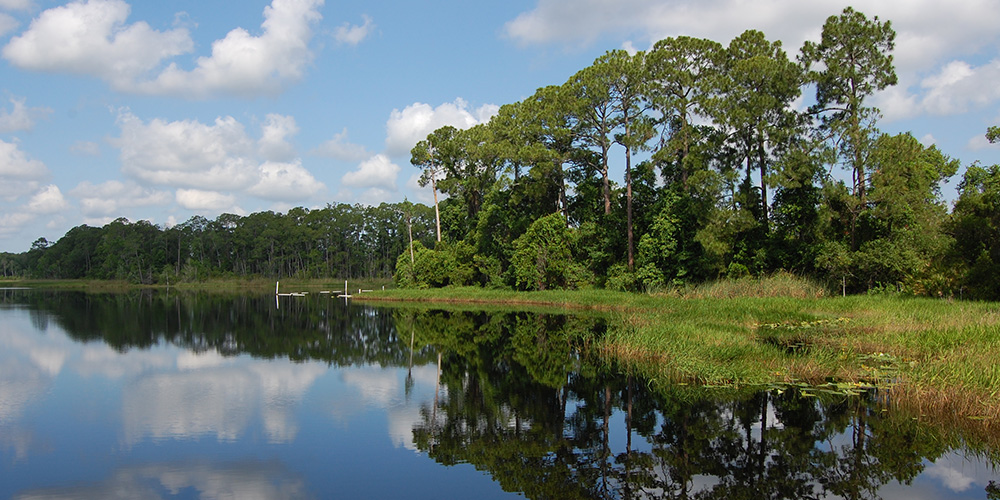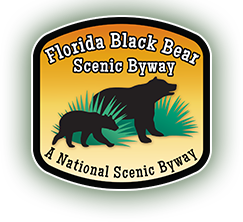Waterways

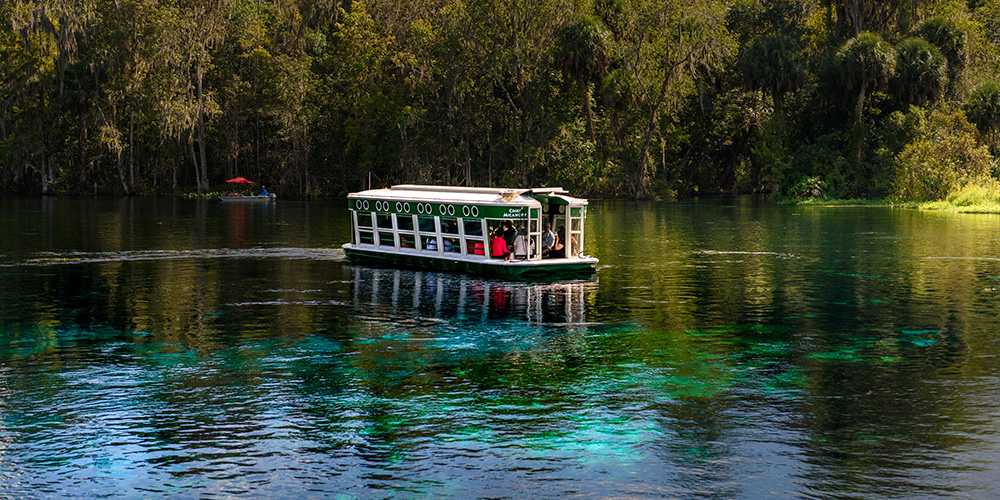
Springs
Freshwater springs are among the most popular attractions along the byway. Four major natural springs of crystal-clear water are unique area features located in the National Forest Recreation Areas named for each of them:
- Juniper Springs
- Salt Springs
- Alexander Springs
- Silver Glen Springs
Natural springs are Florida’s lifeblood, pouring fresh water out into the landscape drawn from deep within the aquifer. There are three first-magnitude springs (Silver Springs, Silver Glen, and Alexander) and four second-magnitude springs (Juniper, Salt, Fern Hammock, Sweetwater) along the Florida Black Bear Scenic Byway. Silver Springs is additionally one of the world’s largest springs.
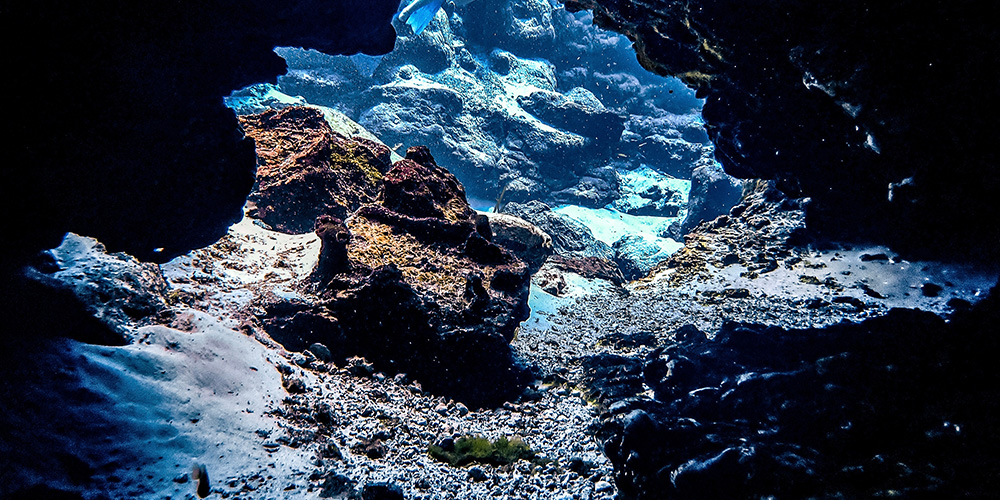
The Meinzer Scale classifies springs on a scale of one to eight, based on the flow, or discharge, of water from a spring. Magnitude one springs, which are on the top of the scale, produce a discharge of more than 100 cubic feet of water per second. Magnitude two springs discharge at a rate between 10 and 100 cubic feet of water per second.
Alexander Springs
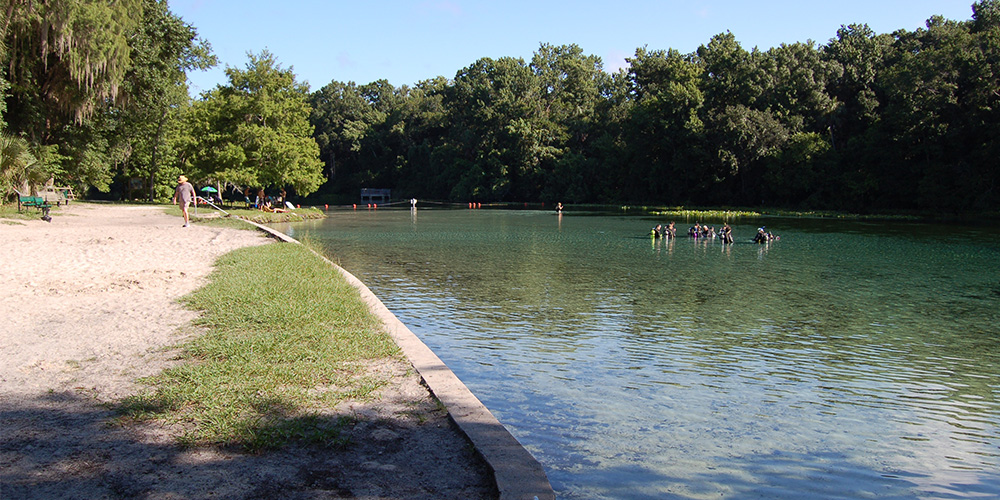
Alexander Springs Recreation Area is in the Ocala National Forest along SR 445 south of the community of Astor.
The only spring with a sandy beach and a gentle, shallow slope leading into the water area, it’s the most peaceful spring, with the least traffic from boaters. The natural setting means visitors are more likely to see alligators, with signs as a reminder.
Alexander Springs has the greatest flow of any natural spring on U.S. Government land. It is a magnitude one spring with a discharge rate of 107 cubic feet per minute.
The Alexander Springs Run winds about eight miles before emptying into the St. Johns River. The surrounding subtropical vegetation of palms, hardwood swamp, and sand pine create a diverse ecosystem unique to this area.

Juniper Springs

Juniper Springs Recreation Area is in the Ocala National Forest along SR 40 between Mill Dam and Astor communities, west of SR 19.
Juniper Springs Recreation Area in the Ocala National Forest is one of the oldest and well-known national forest recreation areas in the eastern U.S. Here, you’ll find two spectacular groups of springs: Juniper Springs and Fern Hammock Springs.
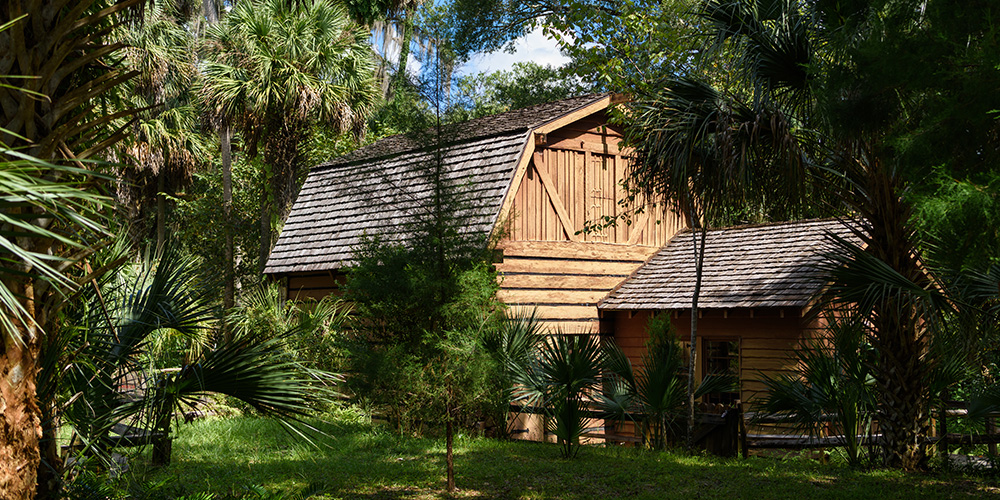
Juniper Springs was one of the showcase projects developed by the Civilian Conservation Corps (CCC) in the 1930s. The CCC built the picturesque Millhouse and watermill adjacent to Juniper Springs and added the cement walkway and access to the spring pool area. Originally, the watermill generated electricity to power the adjacent campground.
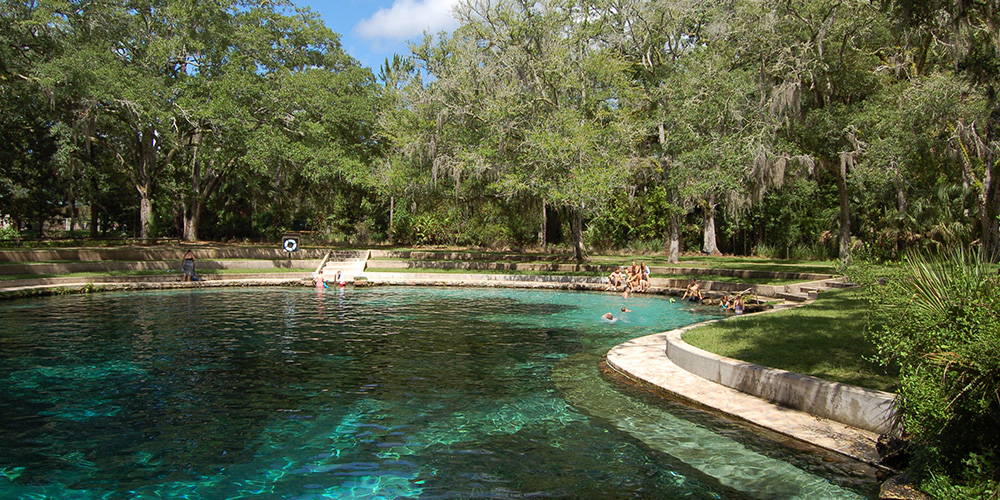
The springs and pool area are surrounded by a concrete walkway, stairs into the water, and a platform for swimmers and snorkelers entering the deep water. Juniper has no beach, but grass, trees, and picnic tables surround the pool area.
You are least likely to spot a gator in the swimming area here. Since Juniper Springs is quite removed from Lake George, there is no boat or canoe access to the springs. However, canoes are for rent for those who wish to take the 7-mile run along Juniper Creek.
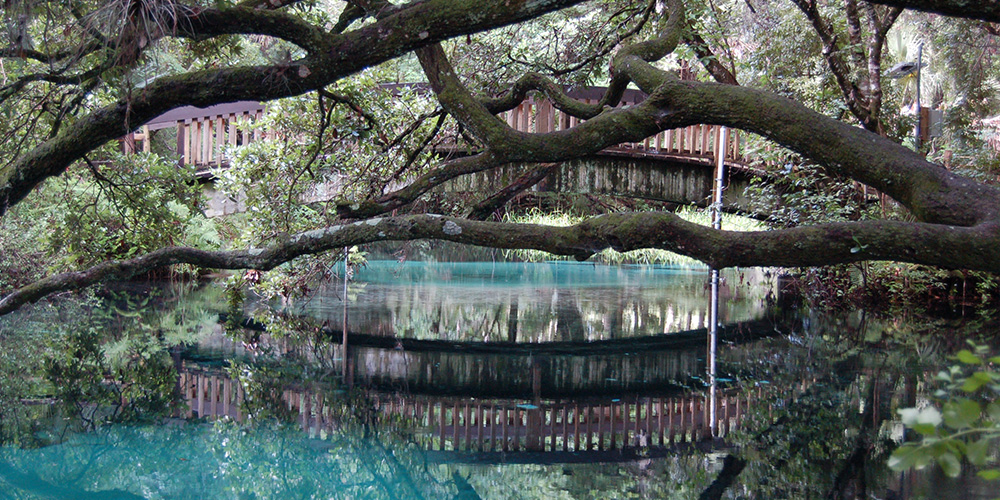
Walk down the nature trail from Juniper Springs to discover the lovely, peaceful Fern Hammock Springs, a group of colorful springs with 12.5 cubic feet per second discharge. At Fern Hammock Springs, nicknamed “The Aquarium,” spring boils look like underwater dust storms, hypnotic gray images flickering across a milky turquoise base. Fern Hammock Springs, adjacent to Juniper, does not allow swimming or canoeing on its shallow waters.
Juniper Springs and Fern Hammock Springs are the headwaters of Juniper Run, which meanders for nearly 11 miles to empty into Lake George, part of the St. Johns River, and is a popular and challenging paddling/canoe run.
Silver Glen Springs
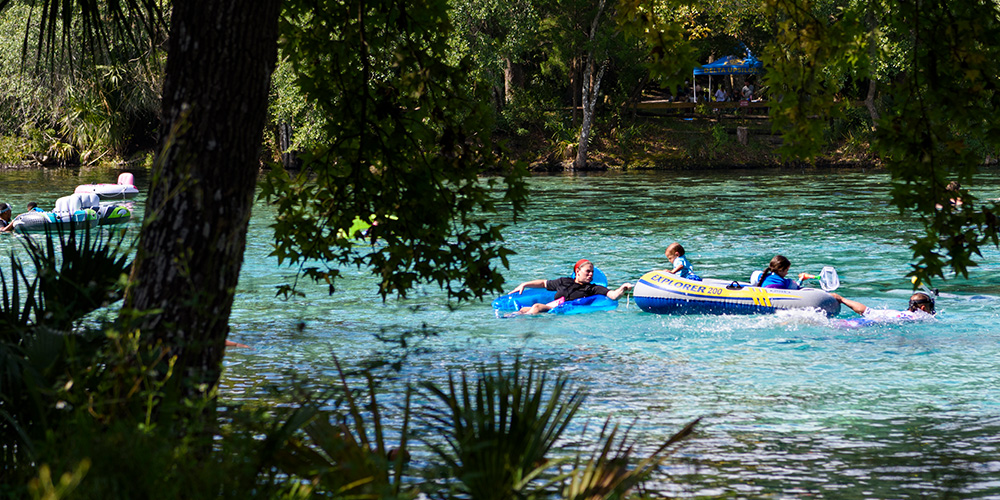
Silver Glen Springs Recreation Area is in the Ocala National Forest along SR 19 north of the intersection with SR 40.
This may be the prettiest blue water of the four springs. Silver Glen Springs is also natural in its setting, surrounded by grass areas, trees, and picnic tables. This is a great spring for wading, with a mostly sandy bottom and a large open spring area for snorkeling. There is not a sandy beach here. This is a day-use-only area, so there is no camping. This spring, like Salt Springs, has close access to Lake George, so boaters can anchor on the river and have access to the springs. You see boaters, canoeists, and kayakers here, particularly on busy weekends and holidays.
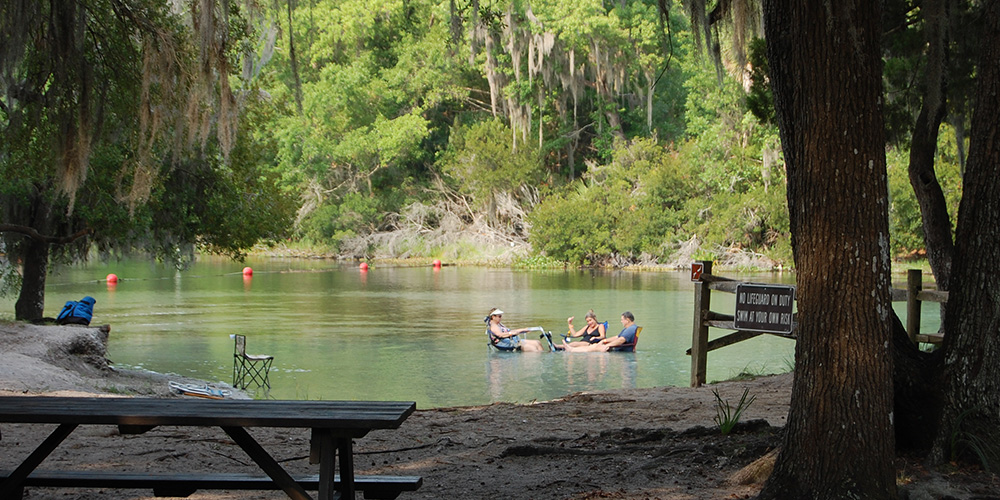
Silver Glen Springs are first-magnitude springs with a discharge that averages 113 cubic feet per second. The springs supply Silver Glen Run, a 200-foot-wide run that travels approximately a half mile before emptying into Lake George. In these tranquil green-blue waters, Jody made his flutter mill in Marjorie Kinnan Rawlings’ Pulitzer prize-winning novel, The Yearling. Nicknamed the “Natural Well,” this spring hosts swirling schools of mullet and striped bass, blue crab and sting rays, seagoing fish that have taken up permanent residence in this warm, brackish outflow that merges with the St. Johns River, a “river of lakes” meandering through the region.
Walk along the edge of the main springs and follow the nature trail back to see a series of small bubbling springs in a shady cove.
Salt Springs

Like Juniper Springs, Salt Springs has a cement walkway around the main spring swimming area. Salt Springs has a large grassy shaded area with picnic tables. The bottom is very rocky, with underwater grass and foliage. Since Salt Springs is easily accessible from Lake George, it can get crowded with boaters who anchor just beyond the spring’s swimming area.
Salt Springs are magnitude two springs with a discharge of 81.3 cubic feet per second. The springs create a wide run that travels about four miles southeast before emptying into Lake George.
The high salt content of the springs provides a unique habitat for Florida aquatic life normally found on the coast, nearly 40 miles away. The unusually high salt content results from the water rising to the surface through ancient salt deposits.
Blue crab, needlefish, and other saltwater species can be seen in the spring’s clear waters. The marine life was established thousands of years ago when this portion of Florida was part of a shallow sea. When the land rose upward, the marine creatures remained there because of the salty flow from the spring.
This unique diversity makes the site wonderful for snorkeling in the clear water.
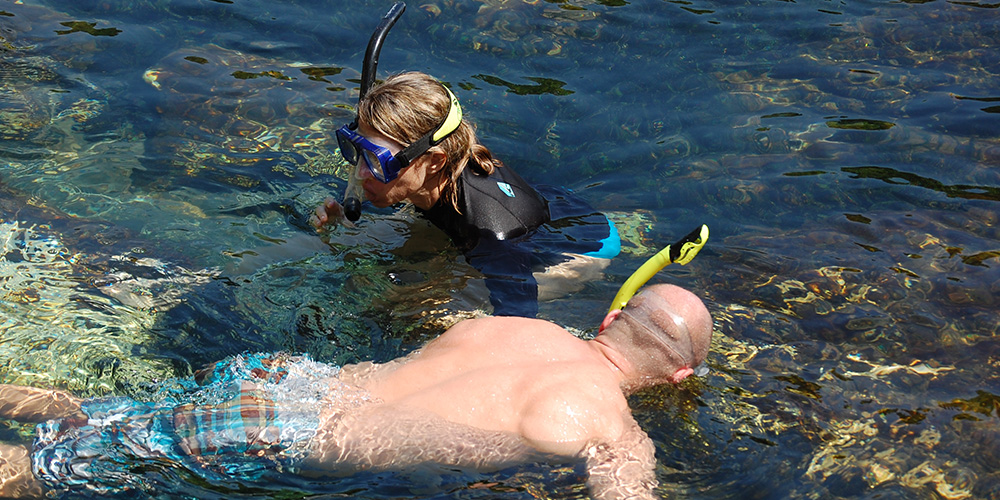
The spring water at Salt Springs derives from vertical cracks deep within the earth. It contains potassium, magnesium, and sodium salts that give it a slightly salty taste.
In the early 1900s, many people believed the springs here had medicinal healing powers. Today’s visitors will find Salt Springs gushing forth 52 million gallons of water daily at a constant 74° Fahrenheit.
Silver Springs
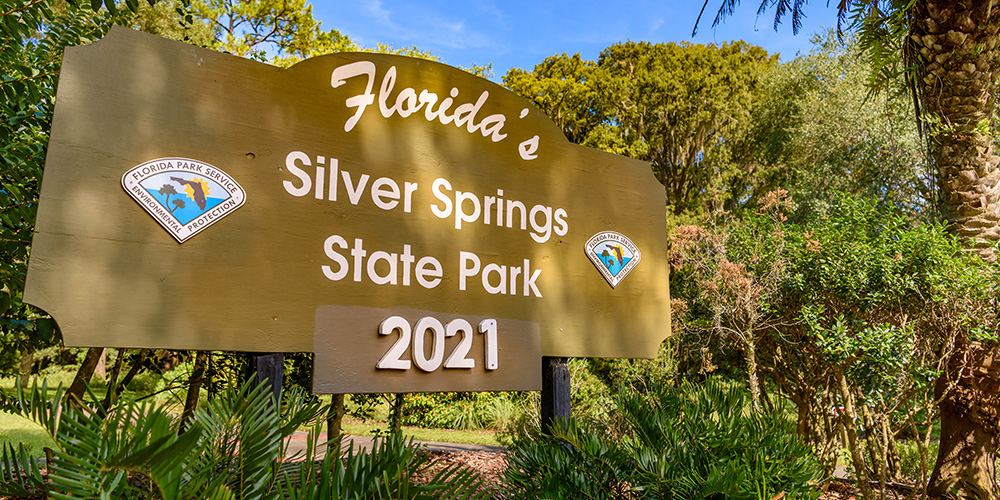
Silver Springs is the largest spring site in the Ocala National Forest. It is primarily accessed through Silver Springs State Park, where guided tours in glass bottom boats.
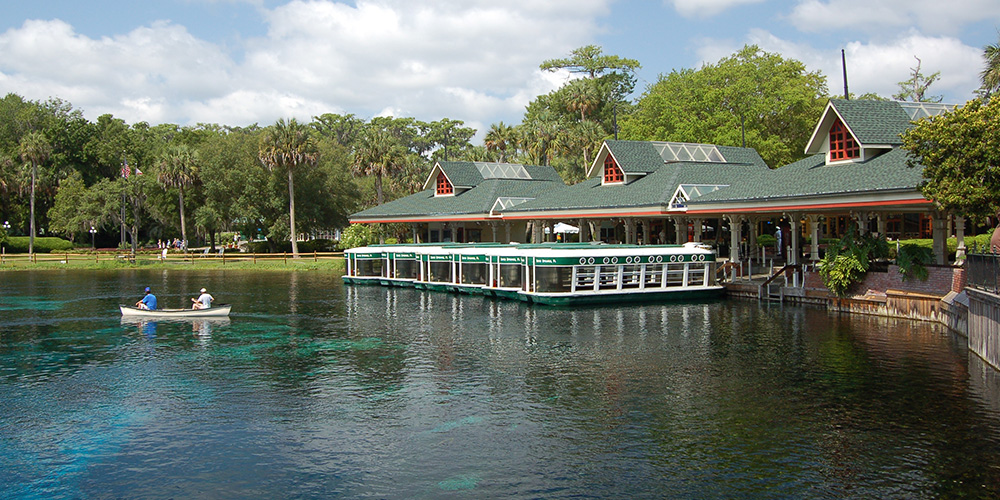
Silver Springs was the original tourist destination of the Ocala area dating back into the mid-1800s. It became so popular that “Florida’s first tourist attraction” became commercialized as the Silver Springs Nature Theme Park. Silver Springs is the site of one of the world’s largest artesian spring formations and produces 550 million gallons of water daily. The Springs form the Silver River.

Silver Springs is a collection of seven springs. The largest of these and the focal point of Silver Springs is Mammoth Springs, which forms the pool and starting point of the famous Glass Bottom Boats. The setting here has been utilized for countless iconic films and television shows, including the Tarzan and Creature from the Black Lagoon films and the popular 60s TV show Sea Hunt.
Sweetwater Springs
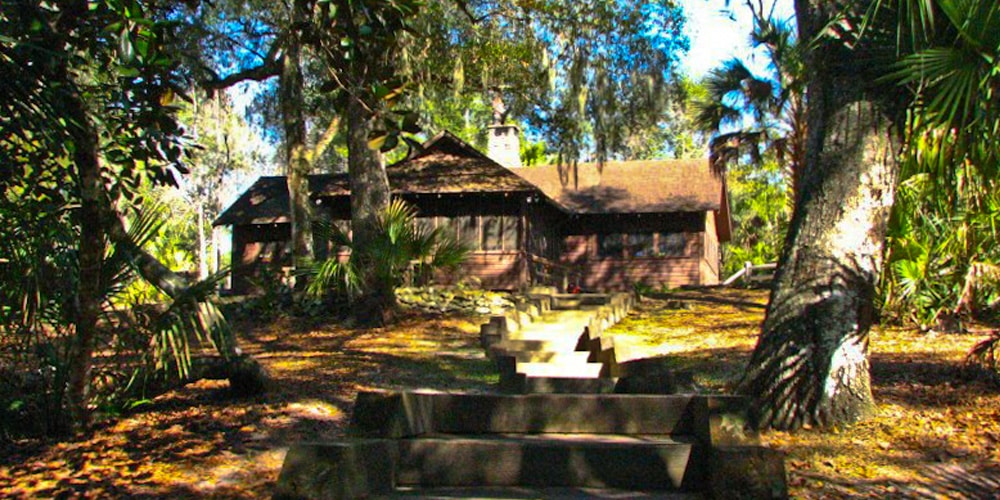
Sweetwater Springs is the most secluded and remote spring within Juniper Prairie Wilderness Area of the Ocala National Forest, in the Silver Springs area. Its remote location makes it accessible primarily via a dirt road.
Sweetwater Springs is located on Juniper Creek, about four miles northeast of Juniper and Fern Hammock Springs. This is not a public access area but “Sweetwater Cabin” is available for rent from the National Forest Service.
Built in the 1930s by the Civilian Conservation Corps, the rustic cabin sleeps 12. The cabin was used during the filming of the movie “The Yearling” in 1945.
The historic cabin is a coveted wilderness getaway. Those interested in staying at the cabin must enter their name in a lottery through Recreation.gov.
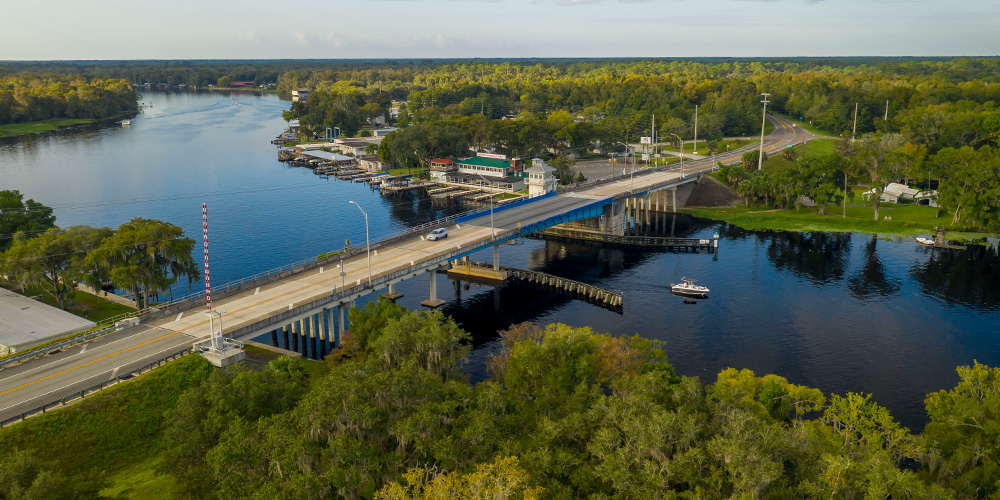
St. Johns River
The St. Johns River is one of 14 American Heritage Rivers and Florida’s longest river. The St. Johns River has a long and storied history dating back to the early Native American tribal people who lived and harvested food from the river to the Spanish Explorers who traveled its currents, and the steamboats and logging barges that used the river to build the local economies.
Today, the river is a great source of recreational activity. People come to the St. Johns River to vacation on houseboats, fish, sail, sight, or just get away for an afternoon on the water. This river is one of only a few rivers that flow north in the United States. In 2008, the St Johns River was listed as one of America’s Ten Most Endangered Rivers. Much of the water from the river is supplied by Florida’s aquifers. The St. Johns River Water Management District manages the river.
Ocklawaha River
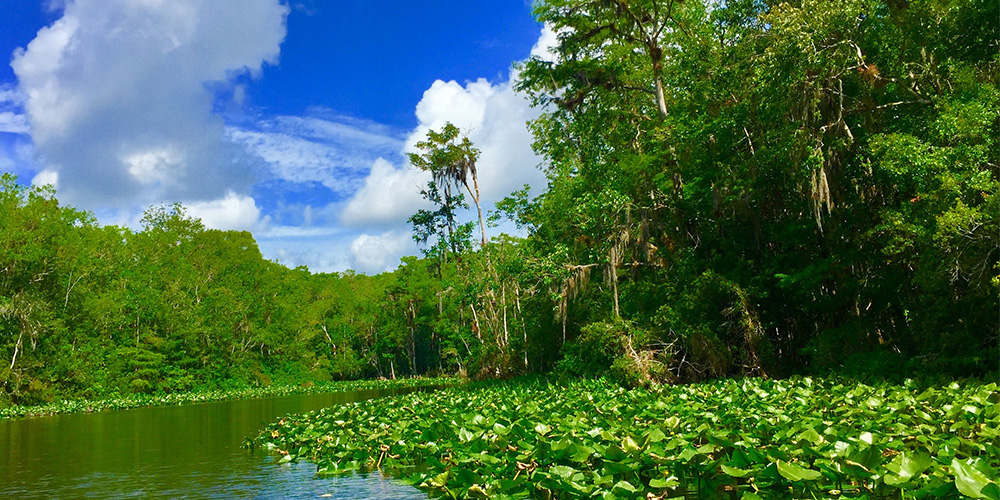
The Ocklawaha River at one time was a favorite route for early tourists in Florida as they made their way to Silver Springs and other points south. Today, it is an ecotourism wonderland.
The Ocklawaha River was once a major tourist river in the 1800s. During the heyday of the Steamboat Era, tourists traveled up and down the Ocklawaha from Palatka to Silver Springs and from Palatka along the St. Johns River through Lake George. They continued the St. Johns to Astor and Deland.
Today, the Ocklawaha River is one of the great ecotourism rivers of the area, providing sportsmen, sightseers, birds, and nature watchers a unique habitat and beautiful setting.
Silver River
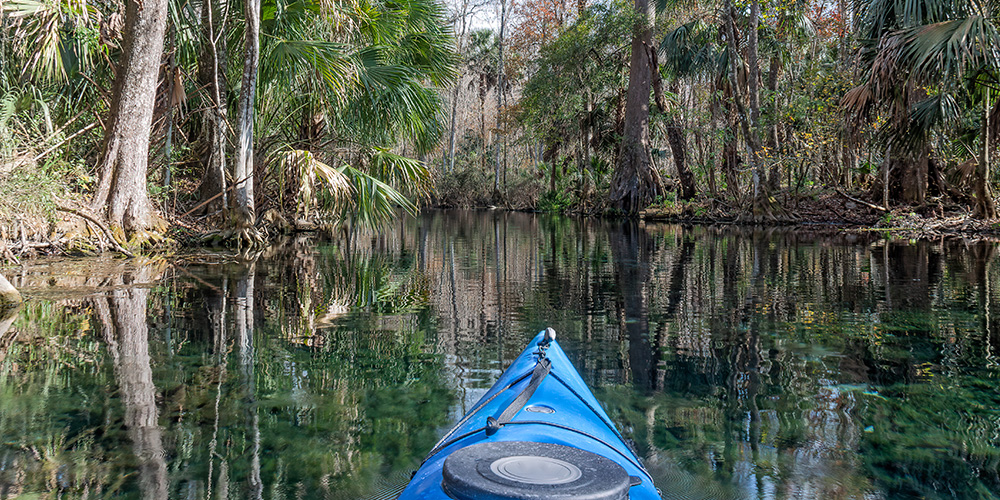
The Silver River is a crystal-clear river fed by Silver Springs and is a popular canoeing and kayaking destination.
The Silver River is formed by the numerous springs that make up Silver Springs. The river is on the west side of the byway in the town named for the springs on SR 40. The Silver River is a primary ecotourism area that draws canoeists, kayakers, and boaters to its rich and diverse underwater life and its dense forest areas. This area has revealed prehistoric life and yielded the bones of saber-tooth tigers and woolly mammoths. These can be seen in the Silver River State Park’s Museum, accessible from SR 35 in Silver Springs. Silver River is a highly protected area, and fishing is prohibited.
Tomoka River
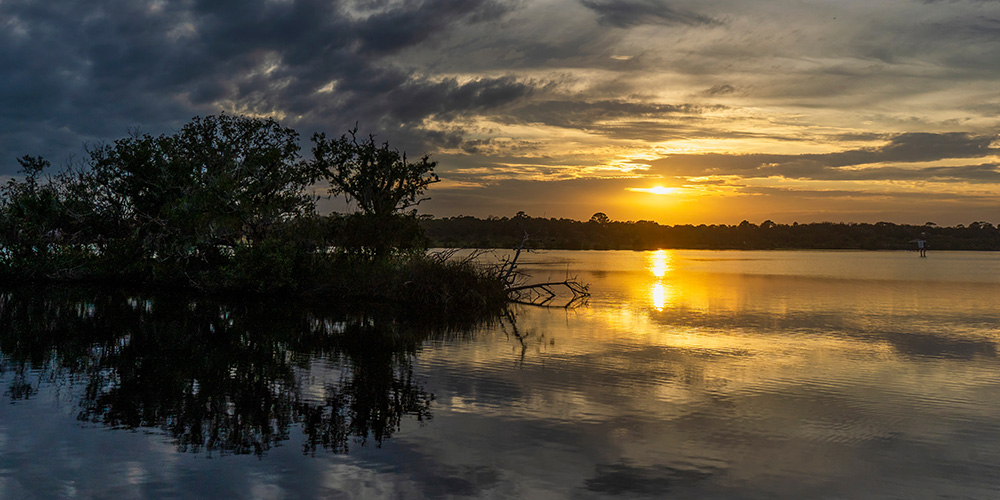
The Tomoka River on the east side flows into Florida’s inland waterway system on its way to the Atlantic Ocean.
The Tomoka River crosses under the Byway near its eastern end on SR 40. The river is designated as a Manatee Sanctuary. The Tomoka River empties into the Halifax River, part of Florida’s inland waterway leading out to the Atlantic Ocean. It is a favorite river for ecotourism and can be accessed through the Tomoka State Park in Ormond Beach.
Florida Barge Canal and the Cross Florida Greenway
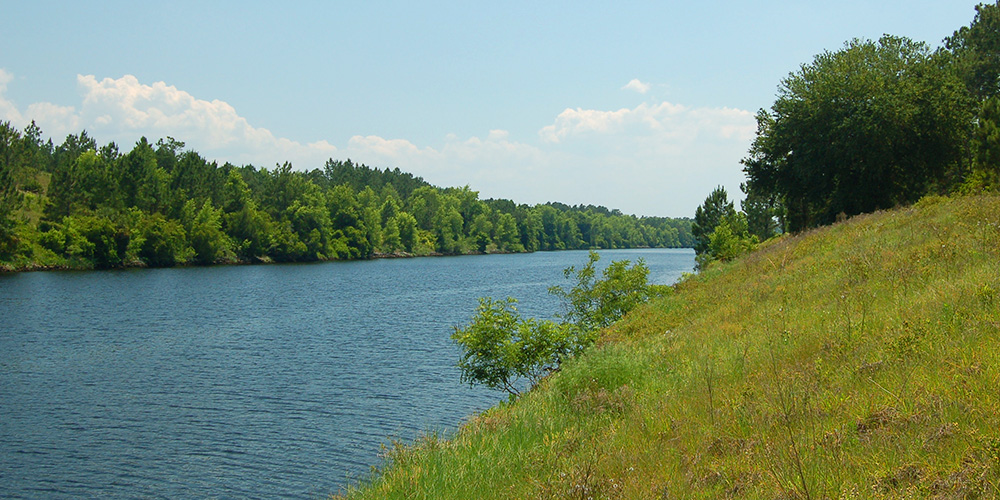
The original plan was to build a canal across Florida from Jacksonville to the Gulf of Mexico. Portions of the St. Johns River and Ocklawaha River would be part of the Florida Barge Canal. Environmentalists stopped the project before a portion of the canal was built. Today it’s a calm stretch of “river” used by boaters, fishermen and ecotourists and is part of the Cross Florida Greenway.
The canal can be seen from the Rodman Campgrounds west of SR 19.

Lakes Overview
There are over a hundred lakes accessible from the Byway. Lake George, Florida’s second-largest lake, dominates the region. Lake George is a part of the St. Johns River and today provides boaters and sportsmen plenty of open water. Extending from Lake George is Little Lake George to the north, which you can cross via the Fort Gates Ferry.
Two popular lakes for swimming and boating are Wildcat Lake (SR 40 east of SR 19) and Mill Dam Lake (SR 40 west of Juniper Springs). Both lakes have sandy beaches and boat ramps. Other popular lakes are Beakman Lake and Grasshopper Lake (south SR 19), Halfmoon Lake and Lake Bryant (west SR 40), Lake Dexter and Lake Woodruff (east SR 40), and Lake Kerr and Lake Delancy (north SR 19).
Lake George
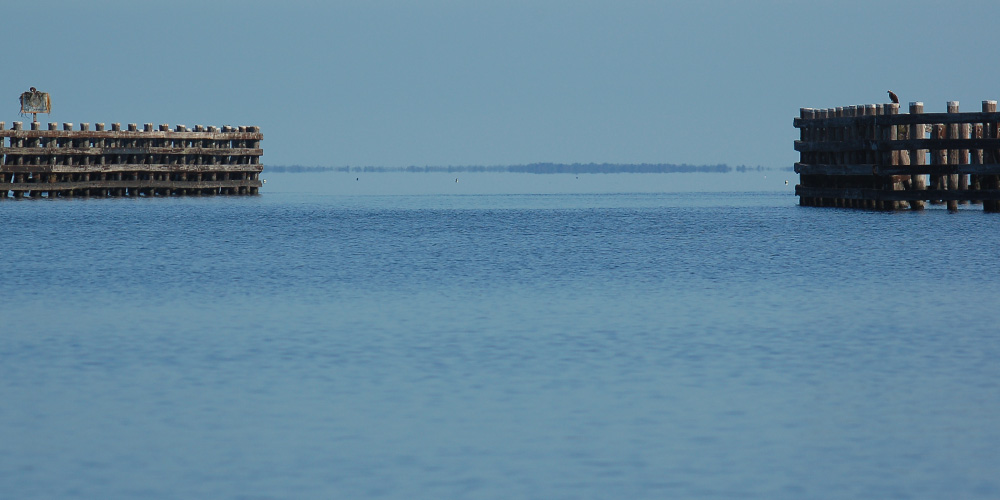
Lake George is Florida’s second largest lake, second only to Lake Okeechobee in South Florida. It is a shallow brackish lake on the St. Johns River. The lake forms part of the eastern boundary of the Ocala National Forest and is located east of SR 19, north of SR 40. The lake has a rich history because of its connection to the St. Johns River. Originally known as Lake Welaka (“Welaka” meaning “chain of lakes”), it was the name for the St. Johns River among the Timucua Indians who lived in the area before the Europeans. Pedro Menéndez de Avilés, who settled in St. Augustine and was the Spanish governor of Florida in the 1500s, was the first European to discover and explore the St. Johns River. Today the river is a haven for boaters, vacationers, and fishermen.
Mill Dam Lake
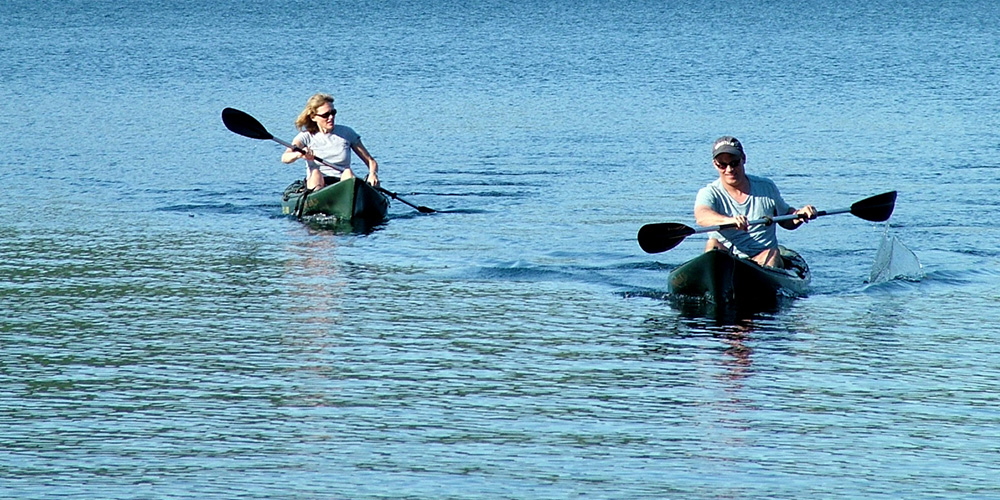
Mill Dam Lake is accessible through the Mill Dam Recreation Area on SR 40 just west of Juniper Springs. This lake has a large sandy beach with a roped-off swimming area. There are picnic tables and grills shaded under a canopy of ancient trees. There is also a boat ramp for lake access.
Rodman Reservoir
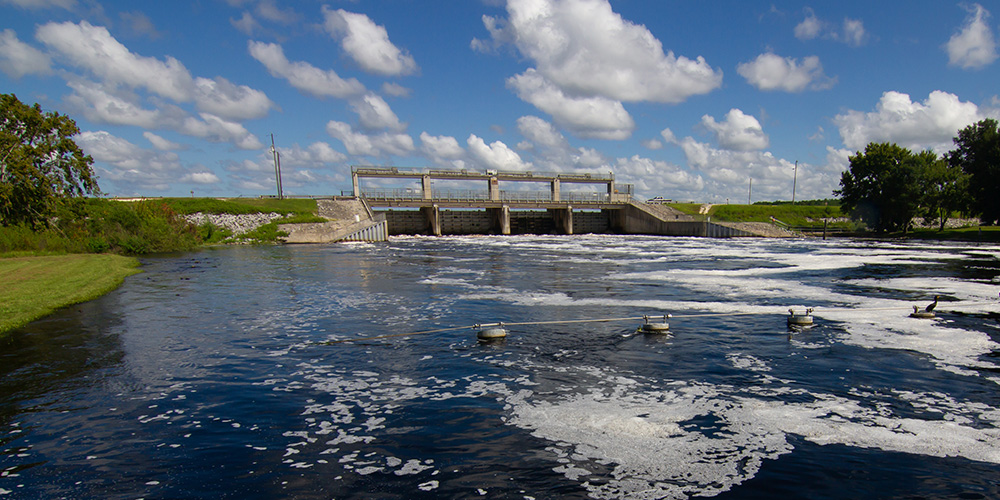
Rodman Reservoir was formed during the days of the Florida Barge Canal when Kirkpatrick Dam was built to regulate water flow on the Ocklawaha River. Once a bone of contention due to the ecological threats to the area that the Cross Florida Barge Canal project posed, today, the Rodman Reservoir is one of the great fishing lakes in the area.
Wildcat Lake
Wildcat like is one of the area’s prettiest and most untouched lakes. The lake sits on the south side of SR 40, just east of the intersection of SR 19. A swimming area, picnic tables, a boat ramp, and two parking lots exist.
